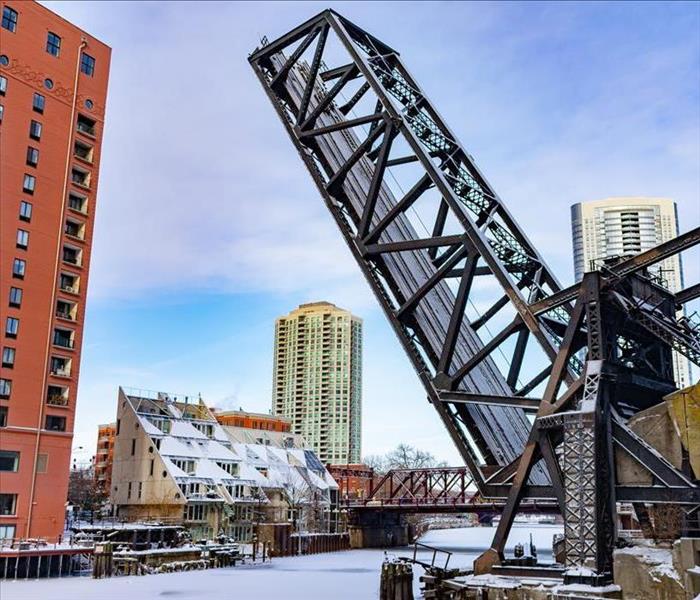Chicago Flooding? No Worries! Call SERVPRO for Extraction and Cleanup
3/11/2020 (Permalink)
 Whether the Great Chicago Flood of 1992 or a Stormwater Intrusion in Your Home--SERVPRO Can Extract the Water and Dry Your Property
Whether the Great Chicago Flood of 1992 or a Stormwater Intrusion in Your Home--SERVPRO Can Extract the Water and Dry Your Property
Dealing with Contaminated Water After Flood Damage in Chicago
Many Chicago residents still remember the Great Chicago Flood of 1992 when a broken, hundred-year-old utility wall under the Chicago River cracked wide open near the Kinzie Street Bridge, allowing about 250 million gallons of water from the river to flow into underground basements, facilities, and subway lines. People downtown evacuated and had to wait three days before the flood cleared. Typically flooding is not this extreme, but when it happens, it still has a significant impact on your life.
If your Chicago home sustained flood damage, the biggest concern is typically not the floodwater itself but the clean up after the flood. Floodwater is either category 2(gray) or 3(black) water, meaning there is a high potential for contamination of microbes, including bacteria and viruses. Cleanup of category 2 and 3 water requires special attention and safety precautions to ensure the health and well-being of pets, residents, and restoration professionals.
Remediation procedures for significantly (category 2) and grossly contaminated (category 3) are as follows:
Protect Occupants and Workers
For category 2 water, technicians use protective gloves only, and occupants may be able to remain in the home. For category 3, however, occupants need to leave home, and technicians use personal protective equipment (PPE) including full-body suits, waterproof boots, and a full-face respirator to allow safe breathing,
Create Engineering Controls to Limit Cross-Contamination
Technicians take several precautions by engineering the environment to make sure that they limit any potential cross-contamination and promote safety. They contain the contaminated areas by sealing any openings to the impacted area with 6-mil polyethylene plastic and create a decontamination chamber that acts as a middle space between the contaminated areas and non-contaminated areas where workers can put on their PPE and store contaminated items. Air quality is an important consideration, so the HVAC system is shut off, and technicians use an air filtration device to suck up and blow air out of the building. This, also known as negative pressure, allows contaminated air to leave the building and only clean air to enter the affected areas.
Removing Water and Debris
Technicians remove water with extraction equipment, including submersible pumps, if it is more than two inches deep, truck-mounted extractors, and portable extractors. SERVPRO flood restoration specialists dispose of contaminated water according to local and state regulations. Technicians remove unsalvageable debris like carpet padding and ruined drywall to dispose of it safely. They often take any salvageable but damaged contents off-site to clean and restore.
For 24/7 assistance after a flood, contact SERVPRO of Evergreen Park / South Chicago City at (773) 337-3900.






 24/7 Emergency Service
24/7 Emergency Service